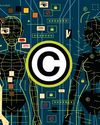試す 金 - 無料
Echolocation Touch
Scientific American
|October 2025
Dolphins' echolocation may be more like feeling than like seeing

IT'S MIDNIGHT in a pitch-dark parking lot. Trying to unlock your car, you fumble and drop the keys. You squat down and run your hand across the invisible pavement. To the left you feel a firm, rubbery tire. Reversing course, you pass over jagged pebbles and papery leaves. Finally your fingers discover—and instantly close around—a notched piece of metal. This kind of tactile exploration may be the closest we can get to imagining the experience of dolphin echolocation, say the authors of a study on dolphin brains that was recently published in PLOS One.
People often imagine echolocation as "seeing" with sound-experiencing auditory signals as a world of images like the ones our brains typically create from light perceived by our eyes. Like sonar devices, which turn sonic waves into visual representations, echolocators emit sounds and then decode spatial and textural information in the echoes that bounce back. And when Russian scientists inserted electrodes into the heads of dolphins and porpoises in the 1970s and 1980s, they reported detecting brain activity in the visual cortex while the animals heard sounds.
このストーリーは、Scientific American の October 2025 版からのものです。
Magzter GOLD を購読すると、厳選された何千ものプレミアム記事や、10,000 以上の雑誌や新聞にアクセスできます。
すでに購読者ですか? サインイン
Scientific American からのその他のストーリー
Scientific American
Will We Run Out of Rare Earth Elements?
These valuable but difficult-to-extract metals are increasingly important to modern life
1 mins
December 2025

Scientific American
Copyright Laws Can Stop Deepfakes
The U.S. should give its residents rights to their own face and voice
4 mins
December 2025

Scientific American
50, 100 & 150 Years
“The list of first-aid procedures that the medical profession encourages laypeople to undertake is short because of concern that tactics applied in ignorance may do more harm than good.
3 mins
December 2025

Scientific American
Dramatic Atmosphere
Exoplanet TOI-561 b has air where none should persist
2 mins
December 2025

Scientific American
The Mother of Depressions
Postpartum depression is a leading cause of death among new mothers. A new type of drug offers better, faster treatment
16 mins
December 2025

Scientific American
Going Rogue
A massive study may improve the prediction of dangerous rogue waves
3 mins
December 2025

Scientific American
Phages Caught Sleeping
Bacteria use hibernating viruses to immunize themselves
2 mins
December 2025
Scientific American
THE COVERT HERBARIUM OF CRYPTOGAMIC BOTANY
A century ago a father and a son labored to replicate the intricate structure of nearly eight hundred species of plants in four thousand delicate models.
1 min
December 2025

Scientific American
Are AI Chatbots Healthy for Teens?
Kids crave approval from their peers. Chatbots offer an alternative to real-life relationships, but they can come at a price
5 mins
December 2025

Scientific American
The Myth of the Designer Baby
Parents beware of any genomics firm saying it can help them with “genetic optimization” of their embryos
5 mins
December 2025
Listen
Translate
Change font size

